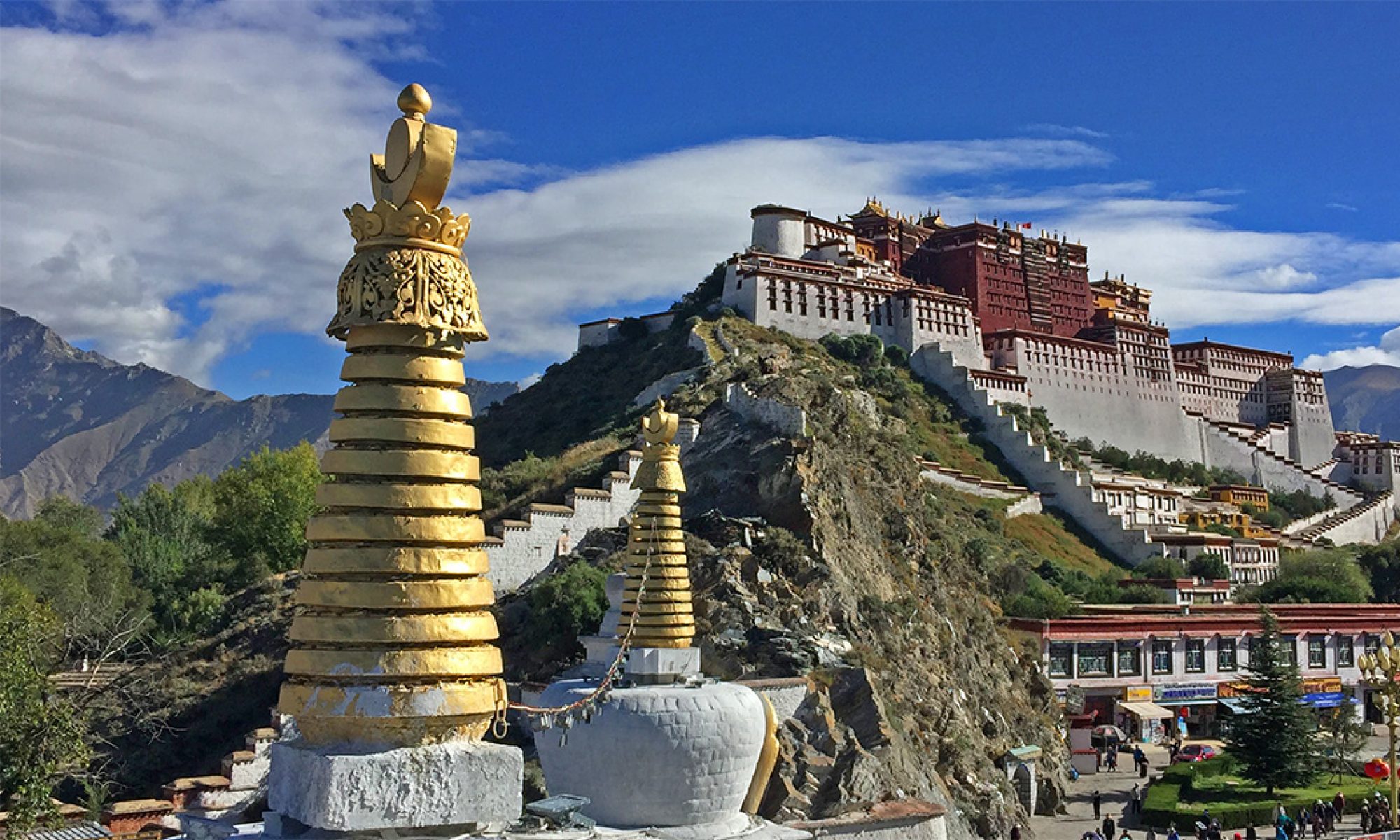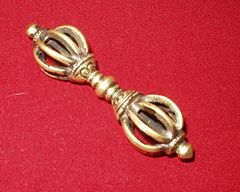Tibetan aesthetics
Beauty in Tibetan Material Culture/History –
What does it matter?
Some opening Questions
Are there developed Tibetan theories or philosophies of sense experience, beauty, art, and taste? If so, according to those philosophies, what is beauty’s relationship to pleasure, art, power, prestige, wealth and agency? What is its relationship to religious institutions and practices? Is there a Tibetan aesthetic or does beauty operate in a way better suited to another category? If, for instance, beauty has more to do with power than pleasure in the Tibetan context, is the term ‘aesthetics’ inappropriate here?
Aesthetics as a field in Western Philosophy
In the Greek sense, the word ‘aesthetic’ denoted things perceivable by the senses and things material, as opposed to things thinkable and immaterial. As a field of Western philosophy, aesthetics was originally concerned with the senses and over time has come to be concerned with sense pleasures and tastes. Over the course of its history as a topic in Western philosophy the term has expanded to connote any theory that deals with beauty or art. In late eighteenth century Europe there was a swell in theoretical interest in aesthetics and during the nineteenth century the field as we know it today became well developed. This had repercussions in the art world, on commerce, and in health and medical fields as well as the intellectual sphere. Kant and Nietzsche made formative contributions to the field, as did art historians such as Johann Joachim Winckelmann (sometimes referred to as the father of modern art history), elaborating and updating the aesthetic questions asked and addressed since the time of Plato and Aristotle . This eighteenth and nineteenth century reinvigoration of philosophical attention paid to pleasure, beauty, and art and related questions of taste, has evolved and changed still further. Its boundaries and purposes are contested and continually renegotiated in the fields of art history, ethics, and anthropology, particularly the anthropology of art . Today’s aesthetics is a wide and flexible field.
What does beauty matter in Tibetan material culture and history – is there a Tibetan Aesthetic?
Perhaps it should go without saying that Tibetans are and have always been interested in things of beauty. But misconceptions about Buddhism can lead to the idea that the people of Buddhist cultures do not or ought not to value material things in general and beautiful or pleasurable things in particular. This is simply not the case. Within the Tibetan cultural sphere there is a vibrant and distinctive aesthetic that shows every indication of interest in and valuing of beauty. It might in fact be true that the interest in beauty is a basic human characteristic, inherently tied to the impulse to seek pleasure and happiness.
This impulse is not culturally relative although its manifestations certainly vary. Western sages such as Aristotle and all of Buddhism’s sages alike have paid attention to the human urge for happiness, although as a defining cultural concept the basic wish for happiness has remained a more prominent theme in Buddhist cultures than in the West. Dealing with the effects of our attraction to things that are pleasing (a.k.a beautiful) and our aversion to things that are displeasing are primary concerns of Buddhism. The senses and their relationship to pleasure and pain are attended to in excruciating detail in Buddhist literature, particularly in the Abhidharma literature . Pleasure and displeasure are also the heart of the field of aesthetics. In the Buddhist context, discussions of attraction (and related attachment) and aversion focus on the connection between these impulses and suffering. According to the basic tenets of Buddhism, naively believing that an unexamined pursuit of sense pleasures will lead to happiness is the root of suffering.
The field of aesthetics is not definitively oriented towards or away from pleasure the way the field of Buddhism maintains itself to be. This might seem to establish aesthetics beyond the pale of Buddhism. But I suggest instead that this commonality establishes aesthetics firmly at the center of Buddhist interests, even if the stated ideals and rhetoric of Buddhism denigrate sense pleasures. From this perspective, the basic aim of Buddhism could be described as refining our understanding and experience of pleasure and displeasure, attraction and repulsion, beauty and ugliness. To be in samsara is to be caught in the cycle of ignorantly desiring pleasure and trying to avoid displeasure. In this sense aesthetics is closely related to Buddhism’s prime concern.
It is difficult to find corners of Tibetan culture where Buddhism does not to some degree pervade. This is not to say that Tibetan culture is equivalent to Tibetan Buddhism, but Buddhism is certainly the prevalent cultural force. Given the prevalence of Buddhism in Tibetan culture, we might expect an attitude of austereness or renunciation to dominate the domain of Tibetan material culture. Tibetan history indeed holds a lion’s share of life-stories of hermits and meditators who epitomize the ideal of material renunciation, living in cave-like dwellings and sustaining themselves on the barest minimum. But they are only part of the story. Renunciation is one Buddhist ideal, but there are other de facto ideals reflected in Tibetan material culture and history throughout the Buddhist world. At the highest echelon of Tibetan monastic culture, an ideal of opulence and abundance is manifest in the making of precious gold and jeweled images and the accumulation of wealth. It is too easy to balk at this as a sign of hypocrisy, especially if it disrupts our image of a ‘pure’ Tibetan Buddhism. But it is commonplace to see this ideal at work in other religions, such as Catholicism and sects of Hinduism, that idealize poverty in some contexts and value wealth and opulence in others. (Usually most visible at the ‘top.’)
Looking back in Buddhist history, we see the senses and pleasures treated with great attention in the Abhidharma literature. The senses and the pleasures they afford are a major concern for Buddhists from the very beginning. While the articulated ideal is to transcend involvement in the senses and to recognize apparent pleasures as the corollary of suffering, there are tensions at play in the stated and lived ideals. These tensions are at play in Tibetan Buddhism and are noticeable in individuals and institutions alike.
The link between art-objects and institutions is an important one here. Alfred Gell asserts that art is always defined in relation to institutions, that art objects are art by virtue of being enfranchised (Gell 1998,12). His view stands in opposition to more traditional definitions of art, whereby art is defined by how the viewer perceives it.
In Buddhist contexts, religious teachers and institutions are the ‘site’ of offerings, the giving of which is understood to bring blessings on the donor. This helps explain why wealth accumulates around monasteries and temples, but where does beauty or perhaps aesthetics come in? Are the tastes of Tibetan Buddhists sometimes reflective of an attention to the beautiful, that which brings pleasure upon seeing, for the ‘sake of beauty’ or is there always more at stake? The role of prestige and the display of wealth, power, and influence bear consideration here as well. I wonder whether beauty is ever discrete from these concerns, and the sense of ‘pleasure’ that ‘beauty’ brings is impossible to isolate from concerns with power.
In a Contemporary Sense
Contemporary Tibetan writing on what could be defined as ‘aesthetics’ uses the terms sgyu rtsal (skill or capacity in deceit or magic), mdzes rtsal (skill or capacity in beauty, elegance, attraction, adornment, or power), mdzes chos rig pa (knowledge or understanding of phenomena related to beauty, elegance, etc). These loose parenthetical approximations at definitions might also be rendered ‘aesthetics.’ In order to think through how beauty matters, it would be helpful to consider the kinds of adjectives Tibetan language uses to describe things of beauty. A common contemporary adjective in Lhasa Tibetan is snying rje po (something which invokes compassion). Other terms include lta na sdug pa(dear upon being seen), mdzes shing yid du ong ba’i (to do with something coming to the mind as beautiful), mtshar sdug (wonderous and dear). The terms yid-du-‘ong-wa, mdzes-po, mdzes-sdug-ldan-pa, yid-‘ong-mdzes-sdug-ldan-pa, yid-dbang-‘phrog-pa, rnam-par-bkra-wa, rang-sems-shor-wa, snyan-po, rna-war-snyan-pa are also commonly used. Most relate to visual beauty but the last two relate to sound, drawing music and spoken word into the discussion. In various ways these terms reflect the connection between beautiful things and the mind of the perceiver.
Some on-going considerations
Influences and Various Histories of Aesthetics
What influences are reflected in Tibetan ideas of or theories about beauty? The obvious answers of Indian and Chinese influences should be augmented by considerations of distinctly Nepali influences as well as more distant cultures along the Silk Road.
Chinese culture has a long history of interest in aesthetics or the study of beauty, //meixue// . And according to Zehou Li, a prominent scholar of Chinese aesthetics, meixue is a much broader category than aesthetics. The range of topics he indicates is so broad in fact that it might be understood as something close to and perhaps even broader than ‘culture.’ He breaks aesthetics into categories of philosophical, historical, and scientific. These break down further to include everything from the fine arts and music to psychology, architecture, decorative arts, science and technology, issues of social life, ecological concerns, education and moral concerns (Li 2006, 20). By his definition meixueresembles the nearly all inclusive Tibetan schema of rig gnas .
Broadening the scope of ‘aesthetics’ too freely might take us into another category, beyond aesthetics as it were. For now I want to try to push the limits of the category and think about the ways that a concern with beauty, taste, and the arts (as generally defined in the contemporary West, including visual arts, literature, and music) as well as architecture, fashion, furniture. Perhaps this is a category best defined as things which are meant in some sense to provide pleasure to the senses. If this is a fair assessment, we are well within the scope of the classical definition of aesthetics, and are perhaps freed from the difficulties of deciding what is and isn’t art in the Tibetan context. (Although since most Tibetan ‘art’ is in some way concerned with Buddhism, perhaps it’s institutional affiliation is enough to assign the term ‘art’, if we follow Gell’s definition and squint.)
Indian aesthetics is dominated by rasa theory. Important texts to consider here are concerned with kavya and saundarya shastra, as well as citrasutra and natya shastra.
The lasting mystique of India as the home of Buddhism suggests that the influence of Indian aesthetics on Tibetan aesthetics would be strong. These influences might be clearest in the literary styles and poetics developed among Tibetan Buddhists.
Perhaps the earliest example we can cite of a Tibetan theorizing about beauty in a way that might be called aesthetic is ‘Phags pa’s 13th century work entitled Mkhas pa rnams ‘jug pa’i sgo. ‘Phags pa drew heavily on Dandin’s Kavyadarsa. The main concern of the early Sakya aestheticians was Indian poetics. This interest in poetics was revivified during the time of the Fifth Dalai Lama, when in a general way there was a renewed attention to what I want to call aesthetics. This time frame is roughly in keeping with the philosophical shift in Western aesthetics.
Nepali influence is most apparent in architecture, particularly in the wood carving typical of the Newar style. Nepalese woodcarving
Perhaps we might detect influences from other cultures along the Silk Route as well, such as Armenia, etc.
Western Influences
A Question of Style– Individuality in Buddhist artistry A remarkable example of innovation in Tibetan painting is seen in the Tenth Karmapa Choying Dorje’s depicitons of the life story of Shakyamuni.
Clothing
Jewelry
Decorative arts
Architecture
Music
Poetry
Painting
Sculpture
Ritual objects
Can Buddhist Arts be Fine? What does beauty mean for ‘presence?’
Are ritual music, thangka painting, sculptures of Buddha non-aesthetic? Some definitions of aesthetics insist that art made due to religious motivation or in ritual contexts is definitively beyond the scope of aesthetics. I contend that this is not the case. The beauty of Buddhist arts matters. In ritual music, disharmony is a grave offense and in a monastic setting a musician who plays a wrong note might be punished. The weight of the aesthetic concern is intensified since the displeasure of a wrong note is not only offensive to the human listener but is also disruptive to the efficacy of the ritual.
A further list of Tibetan literature on art.


























